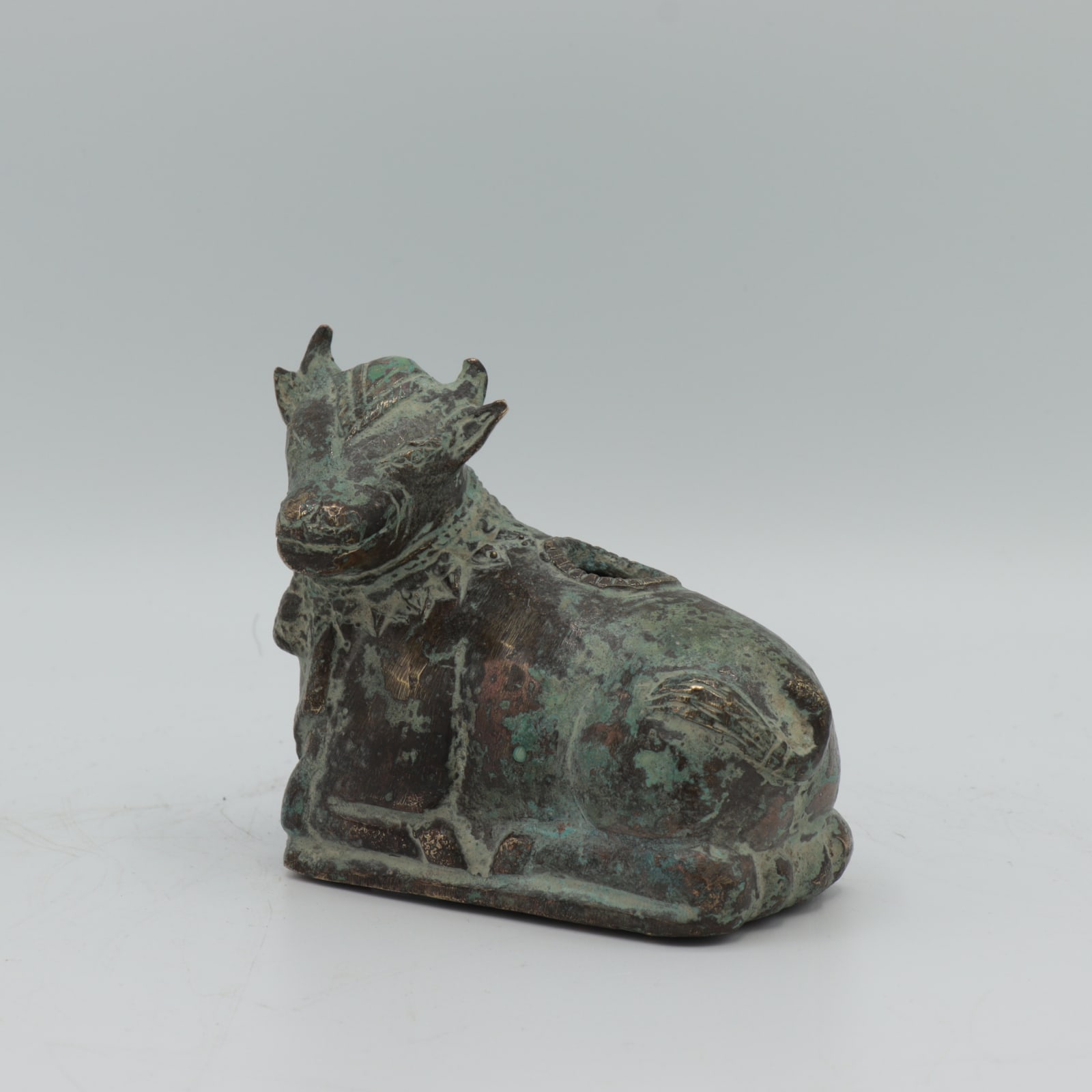Bronze Nandi bull sculpture, c. 12th-13th century CE
Bronze
8.7 x 10.3 cm
3 3/8 x 4 in
3 3/8 x 4 in
EL.0067
Further images
This intricate artwork represents a bull lying down, with its legs tucked beneath it, and its head turned to the left. It is wearing a gentle expression, with narrow eyes....
This intricate artwork represents a bull lying down, with its legs tucked beneath it, and its head turned to the left. It is wearing a gentle expression, with narrow eyes. Ears and horns project from the top of its head. There is a decorative triangle on its forehead, and it is wearing a bell around its neck suspended from an elaborate collar, with triangles extending from the edges. There is also a line of striped decoration around a hole in its back, showing its hollow interior.
This may be a representation of Nandi, the bull vahana of the Hindu god Shiva. In Hinduism, a vahana (literally ‘that which carries’) is the vehicle or mount of a particular deity, often taking the form of an animal or mythical creature. They are able to act independently, but they also function as an attribute of their deity. The positive qualities of the animal chosen can be seen to reflect the character of the deity; Nandi, as a bull, represents the strength and virility of Shiva. Nandi is also the guardian of Kailash, the mountain in Tibet which is said to be the abode of Shiva, along with his consort Parvati and their children Ganesha and Kartikeya. Many Shiva temples contain a stone image of Nandi, usually facing the main shrine.
This may be a representation of Nandi, the bull vahana of the Hindu god Shiva. In Hinduism, a vahana (literally ‘that which carries’) is the vehicle or mount of a particular deity, often taking the form of an animal or mythical creature. They are able to act independently, but they also function as an attribute of their deity. The positive qualities of the animal chosen can be seen to reflect the character of the deity; Nandi, as a bull, represents the strength and virility of Shiva. Nandi is also the guardian of Kailash, the mountain in Tibet which is said to be the abode of Shiva, along with his consort Parvati and their children Ganesha and Kartikeya. Many Shiva temples contain a stone image of Nandi, usually facing the main shrine.













